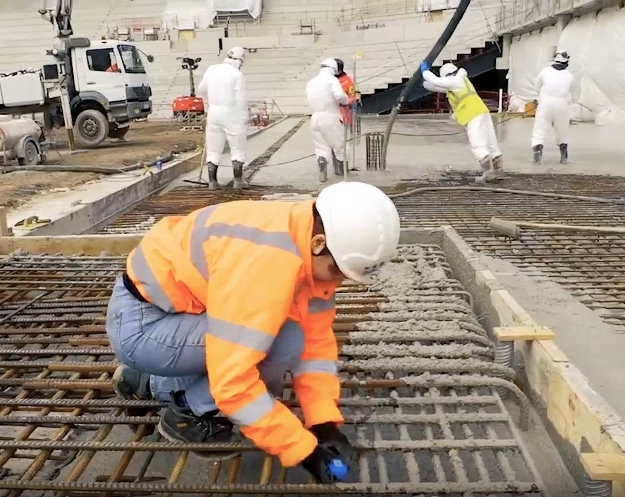Early-age concrete behaviour directly affects the safety and performance of structural elements. Such as foundations, pile caps, rafts, and deep footings. Their reliability depends on understanding how concrete gains strength and responds during curing.
For geotechnical and foundation engineers, critical decisions around load transfer, construction staging, and verification must be based on accurate, in-situ site data. Not assumptions or inconsistent break-test results.
Modern real-time concrete monitoring for geotechnical engineering provides continuous insight into curing behaviour, temperature development and strength gain. Systems like Converge Wireless Concrete Sensors allow engineers to reduce uncertainty, strengthen QA processes and deliver more defensible certification.
1. Real-Time Concrete Strength Monitoring for Foundations
Geotechnical engineers must determine when foundation elements can safely support loads, including:
- pile caps
- ground beams
- footings and rafts
- retaining structures
Traditional methods rely on periodic break tests. Which only offer isolated results and may not reflect real in-situ curing conditions. Early-age concrete strength monitoring provides continuous temperature-based strength modelling, allowing engineers to confirm load-transfer readiness with significantly greater confidence.
Key benefits:
- In-situ strength assessment
- Continuous real-time data instead of discrete samples
- Mix-specific strength curve modelling
- Faster and more accurate certification for load transfer
2. Mass Concrete Temperature Monitoring for Deep Foundations
Large or restrained pours can generate substantial internal heat due to cement hydration. Differential temperature between the core and surface can cause early-age cracking, compromising durability and long-term performance.
Mass concrete temperature monitoring allows engineers to:
- track internal and surface temperatures
- calculate thermal gradients
- validate compliance with project specifications
- receive alerts when thresholds are exceeded
This is essential for deep foundations, abutments, bridge elements, wind turbine bases and heavily reinforced pile caps.
3. Better QA and Verification for Geotechnical Sign-Off
Geotechnical and foundation engineers often provide certification for concrete adequacy prior to load application. Digital concrete QA for foundation engineering enhances verification by supplying:
- traceable strength-time curves
- full thermal histories
- real-time curing performance
- automated reporting for ITPs and compliance records
Engineers can confidently sign off that real site conditions — not assumed averages — meet design requirements.
4. Improving Construction Sequencing and Site Operations
Concrete curing influences how quickly geotechnical activities can proceed, such as:
- backfilling beside foundation elements
- operating plant on slabs and working platforms
- applying lateral loads to retaining structures
- commencing pile testing
Access to in-situ concrete strength measurement enables engineers to remove unnecessary waiting periods. In addition, reduce program delays, and increase the accuracy of construction advice.
5. Reducing Geotechnical Risk Through Digital Monitoring
Geotechnical risk management increasingly depends on data-driven decision making. Real-time concrete monitoring reduces risk by providing:
- accurate curing validation
- early detection of abnormal thermal behaviour
- objective evidence during disputes
- alignment between design assumptions and actual field performance
This supports safer, more efficient foundation delivery across infrastructure and building projects.
Conclusion: A Modern Advantage for Geotechnical and Foundation Engineers
Real-time concrete monitoring represents a major advancement for geotechnical and foundation engineering. By capturing continuous temperature and strength development inside the concrete element, systems like Converge deliver:
- improved safety
- more reliable strength verification
- faster turnaround for load-transfer decisions
- superior QA documentation
- reduced construction risk
For engineering teams looking to enhance their technical capability and support project certainty, wireless concrete monitoring systems offer a clear competitive edge.
Metromatics provides the Converge Concrete Monitoring System throughout Australia. This system helps geotechnical, civil, and foundation engineering teams. It offers real-time concrete information for safer and quicker decisions based on data.
Contact Metromatics today to discuss how Converge can integrate into your geotechnical workflows.
